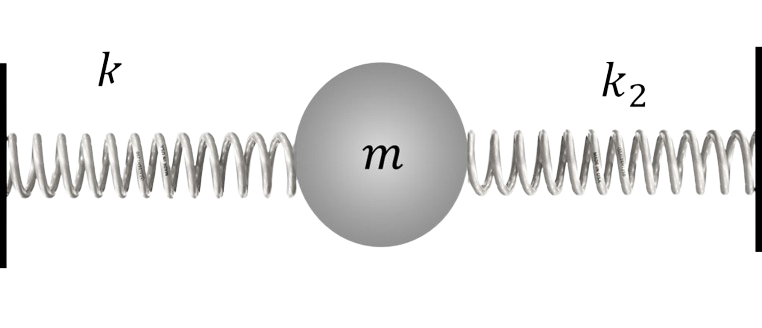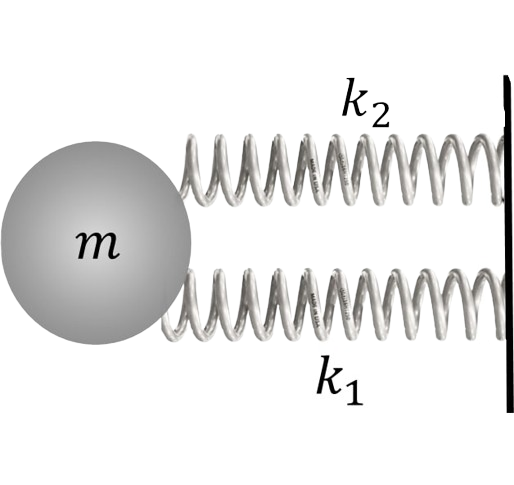
$2.1.15.$ The body of mass $m$ is connected by two springs of stiffness $k_1$ and $k_2$ with fixed walls, the springs are not initially deformed. When vibrations occur, the greatest acceleration of the body is $a$. Find the maximum deviation of the body from the equilibrium position and the maximum forces with which the springs act on the walls.


1. The springs in this problem are connected in parallel, their deformation is the same $$ Δx_1 = Δx_2 = Δx $$ 2. The force acting on the mass from the springs is determined as the sum $$ F = F + F_1 $$ alternatively $$ k \Delta x = k_1 \Delta x + k_2 \Delta x $$ 3. Let us write down the equation of motion of the mass under the action of an equivalent spring with stiffness ko, which will allow us to determine the maximum displacement $$ ma = (k_1 + k_2) \Delta x_{max} $$ $$ \Delta x_{max} = ma/(k_1 + k_2) $$ 4. Maximum values of forces acting on the mass $$ {F_1}_{max} = k_1 \Delta x_{max} $$ $$ {F_2}_{max} = k_2 \Delta x_{max} $$
$$x_{max} = ma/(k_1 + k_2);$$ $${F_1}_{max} = k_1x_{max}$$ $${F_2}_{max} = k_2x_{max}$$